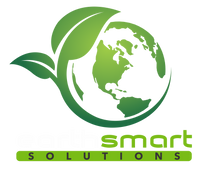Biostimulants Role in Environmental and Waste Management Applications

Biostimulants are amazingly versatile.
In addition to being used to enhance plant growth, health, and productivity, they also play a crucial role in various environmental and waste management applications, including:
- wastewater treatment plants
- manure lagoons
- oil spill cleanup sites
- sewage treatment plants
- sewage lagoons
- municipal landfills
- hydrocarbon bioremediation projects
- composting facilities
Their effectiveness in these applications is rooted in their ability to:
- enhance microbial activity
- promote the breakdown of organic matter
- accelerate the natural processes of biodegradation and remediation
Here's how biostimulants work in these specific applications:
1. Wastewater Treatment Plants:
- Biostimulants are used to boost the performance of beneficial microorganisms in wastewater treatment systems.
- They provide essential nutrients and organic matter, creating a favorable environment for the growth and activity of beneficial bacteria and fungi.
- This enhanced microbial activity helps break down organic pollutants, such as sewage, industrial effluents, and organic matter, more efficiently, leading to cleaner effluent water.

2. Manure Lagoons:
- In agricultural settings, manure lagoons can become sources of water pollution if not managed properly.
- Biostimulants can be added to manure lagoons to stimulate the microbial decomposition of organic matter and reduce the release of harmful compounds into the environment.
- They can help control odors and improve the overall quality of the manure for use as a nutrient-rich fertilizer.
3. Oil Spill Cleanup Sites:
- Biostimulants are employed to accelerate the biodegradation of oil and hydrocarbon contaminants in soil and water.
- They provide essential nutrients to indigenous oil-degrading microorganisms, enhancing their ability to break down hydrocarbons.
- This can speed up the natural remediation process and reduce the environmental impact of oil spills.
4. Sewage Treatment Plants and Lagoons:
- Similar to wastewater treatment plants, biostimulants enhance microbial activity in sewage treatment systems.
- They promote the decomposition of organic materials, reduce sludge production, and improve the treatment efficiency of sewage.
- This can lead to cost savings and more effective treatment processes.

5. Municipal Landfills:
- Biostimulants can be applied to landfill sites to promote the biodegradation of organic waste and reduce methane emissions.
- By enhancing microbial activity, they facilitate the breakdown of organic matter, which can help mitigate the environmental impact of landfills.

6. Hydrocarbon Bioremediation Projects:
- In projects aimed at cleaning up sites contaminated with hydrocarbons (e.g., oil spills or polluted soil), biostimulants are used to support hydrocarbon-degrading microbes.
- They provide nutrients and co-factors that these microbes require to metabolize and break down hydrocarbon compounds.
7. Composting Facilities:
- Biostimulants can accelerate the composting process by increasing microbial activity.
- They help break down organic materials (e.g., kitchen waste, yard trimmings) more quickly, resulting in faster compost production and higher-quality compost.

In all of these applications, biostimulants act as microbial "boosters" by providing essential nutrients, organic matter, and a favorable environment for microorganisms to thrive. By enhancing microbial activity, they contribute to more efficient waste decomposition, remediation, and waste management processes, ultimately leading to cleaner and more sustainable environmental outcomes.
Earth Smart Solutions offers a Micro Nutrient Bio-Stimulant. Learn more about it here.
To read a case study of how our Micro Nutrient Bio-Stimulant worked on a wastewater lagoon, then please check out our blog.
Please contact us for more information via email at info@earth-smart-solutions.com or call us at 1-866-444-7174.




Leave a comment